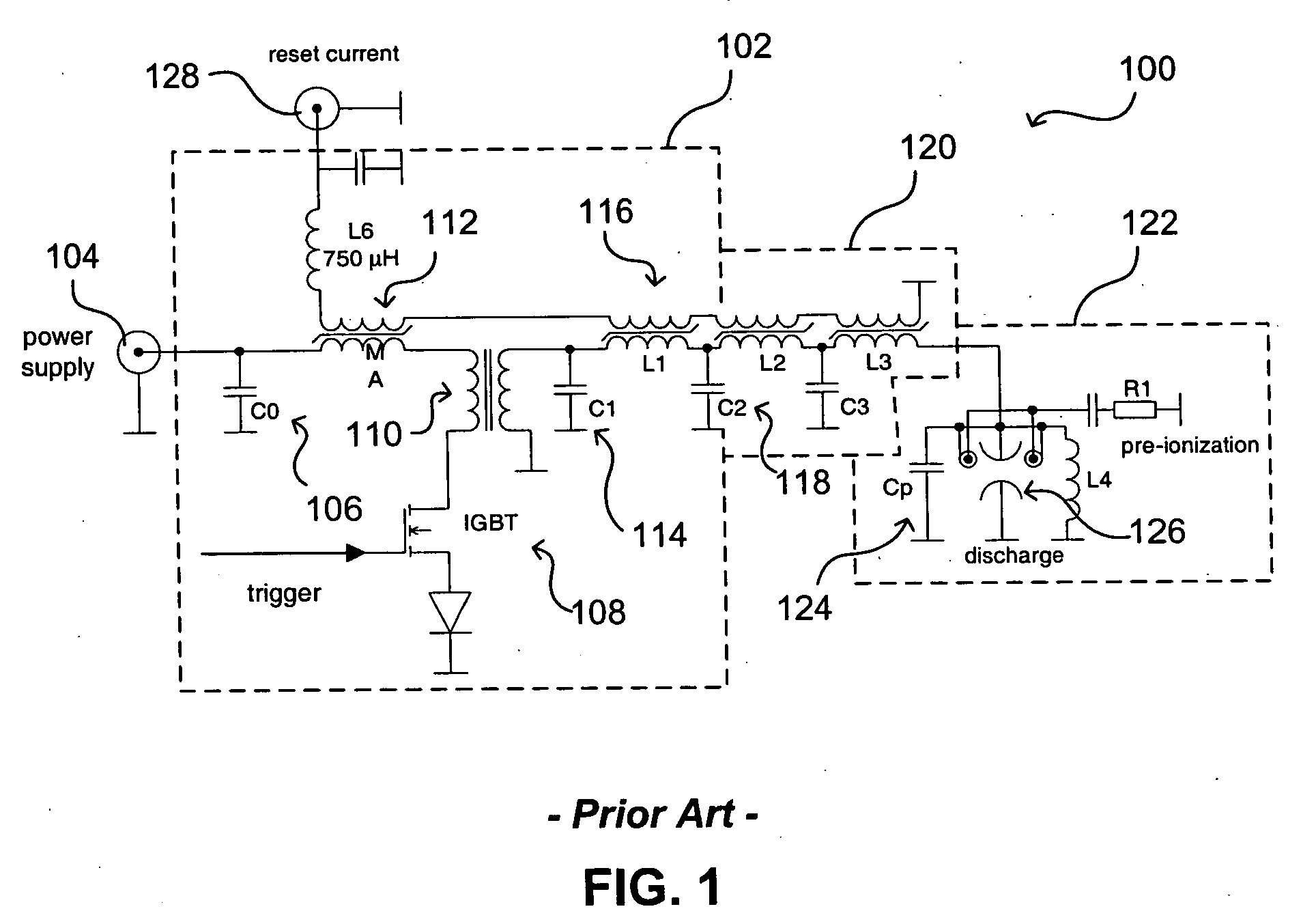System and method for segmented electrode with temporal voltage shifting
a technology of temporal voltage shifting and segmented electrodes, which is applied in the direction of laser details, electrical equipment, active medium materials, etc., can solve the problems of submicron features, increased complexity and expense, and requirements of semiconductor manufacturers for higher power and tighter bandwidth
- Summary
- Abstract
- Description
- Claims
- Application Information
AI Technical Summary
Problems solved by technology
Method used
Image
Examples
Embodiment Construction
Systems and methods in accordance with embodiments of the present invention can overcome deficiencies in existing excimer and molecular fluorine laser systems by changing the way in which voltage is applied to the discharge electrodes. An improved discharge can help to optimize the temporal shape of the discharge pulse, such as to provide a pulse that is longer, has a lower peak value, and / or is substantially more uniform at the peak.
FIG. 2 shows a laser system 200 in accordance with one embodiment, wherein one of the main discharge electrodes, here the anode, is separated into (at least) two segments 204, 206 while the other main electrode 202, here the grounded cathode, remains unsegmented. In alternative embodiments, only the cathode and / or both main discharge electrodes (e.g., the anode and cathode) can be segmented as will be discussed elsewhere herein. The use of segmented electrodes can allow for multiple discharges within a single laser medium. Each of these discharges can...
PUM
 Login to View More
Login to View More Abstract
Description
Claims
Application Information
 Login to View More
Login to View More - R&D
- Intellectual Property
- Life Sciences
- Materials
- Tech Scout
- Unparalleled Data Quality
- Higher Quality Content
- 60% Fewer Hallucinations
Browse by: Latest US Patents, China's latest patents, Technical Efficacy Thesaurus, Application Domain, Technology Topic, Popular Technical Reports.
© 2025 PatSnap. All rights reserved.Legal|Privacy policy|Modern Slavery Act Transparency Statement|Sitemap|About US| Contact US: help@patsnap.com



